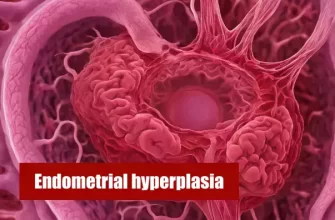What Is Bone Marrow Cancer
Bone marrow cancer, or multiple myeloma, is a malignancy that affects both the bone marrow and plasma cells. The bone marrow, located inside the skeletal structure, is accountable for the generation of blood cells. However, in the context of bone marrow cancer, there is an anomalous proliferation of plasma cells, which are leukocytes responsible for producing antibodies to combat infections.
This kind of cancer may lead to a range of problems, including compromised immune system function, decreased red blood cell count, and abnormalities in the bones. In addition, it may increase persons’ susceptibility to infections, fatigue, bone soreness, and even fractures.
Myeloma, a kind of cancer that affects the bone marrow, usually progresses gradually and is more prevalent among those aged 65 and above. Cancer need medical intervention and specific therapy to address symptoms and decelerate its development.
Common Symptoms
The symptoms of bone marrow cancer, which is also referred to as multiple myeloma, can differ depending on the stage of the disease. Initially, people may not have any symptoms. However, as the cancer advances, the following symptoms may manifest:
- Bone Pain: Bone pain is the predominant manifestation of bone marrow cancer. This pain frequently manifests in the back, ribs, hips, or elsewhere in the skeletal system. The pain may endure and can present as a constant ache or a sharp sensation.
- Fatigue: Fatigue and weakness are common symptoms experienced by people with bone marrow cancer. These symptoms can be attributed to a condition called anemia, which is characterized by a deficiency of healthy red blood cells in the body.
- Frequent Infections: Bone marrow cancer weakens the immune system, making individuals more susceptible to infections. These infections can include respiratory infections, urinary tract infections, and skin infections.
- Easy Bruising and Bleeding: Bone marrow cancer can also lead to low levels of platelets in the blood, which are responsible for clotting. As a result, individuals may experience easy bruising, bleeding gums, or frequent nosebleeds.
- Loss of Appetite and Weight Loss: Some individuals with bone marrow cancer may experience a loss of appetite and unintentional weight loss.
It is important to note that these symptoms can also be caused by other conditions, and a proper diagnosis by a healthcare professional is necessary.
Description of Stages with Related Symptoms
There are different stages of bone marrow cancer, each with its own set of related symptoms. It is important to understand these stages in order to properly diagnose and treat the disease.
Stage 1: In the early stage, there may be no symptoms present. The cancer is usually found incidentally during routine blood tests.
Stage 2: At this stage, symptoms such as bone pain, fatigue, and frequent infections may start to appear. These symptoms can be mild to moderate.
Stage 3: In this stage, the cancer has spread further and symptoms become more pronounced. Bone pain can become severe, leading to fractures. Fatigue and weakness may worsen, and anemia becomes more common.
Stage 4: At this advanced stage, the cancer has spread extensively, affecting multiple organs and bone integrity. Severe bone pain, extreme fatigue, frequent infections, and easy bruising and bleeding are common symptoms.
Types
There are several types of bone marrow cancer, each categorized based on the specific type of cells that are affected. These include:
- Multiple Myeloma: Multiple myeloma, the most prevalent form of bone marrow cancer, impacts plasma cells, which produce antibodies to combat infections. This condition involves an abnormal buildup of plasma cells in the bone marrow, resulting in weakened bones and potential complications like anemia, kidney issues, and infections.
- Leukemia: Leukemia, a form of cancer, impacts the cells responsible for producing blood in the bone marrow. It is categorized into various types, such as acute lymphoblastic leukemia (ALL), acute myeloid leukemia (AML), chronic lymphocytic leukemia (CLL), and chronic myeloid leukemia (CML). Each type affects different blood cell types and exhibits diverse symptoms and treatment methods.
- Lymphoma: Lymphoma refers to a type of cancer that impacts the lymphatic system, comprised of the bone marrow, lymph nodes, and spleen. There are two primary classifications of lymphoma: Hodgkin lymphoma and non-Hodgkin lymphoma. In both types, an excessive amount of abnormal white blood cells known as lymphocytes gather and create tumors, resulting in symptoms like swollen lymph nodes, tiredness, and excessive sweating at night.
- Myelodysplastic Syndromes (MDS): Myelodysplastic syndromes are a group of bone marrow disorders in which the bone marrow does not produce enough healthy blood cells. This can lead to symptoms such as anemia, easy bruising, and increased vulnerability to infections.
Possible Causes
Bone marrow cancer, also known as hematologic malignancy, can emerge from various causes. While the exact causes of bone marrow cancer are not always clear, certain risk factors have been identified. These include:
- Genetic Factors: Certain people may have gene mutations that make them more likely to develop bone marrow cancer. These genetic abnormalities can interfere with the normal operations of bone marrow cells.
- Exposure to Radiation or Chemicals: Individuals who are regularly exposed to high levels of radiation or specific chemicals like benzene may face a higher likelihood of developing bone marrow cancer, particularly those employed in occupations with frequent exposure to these substances.
- Age: The risk of bone marrow cancer generally increases with age. Most cases are diagnosed in individuals who are over 60 years old.
- Weakened Immune System: Individuals who have weakened immune systems, such as those who have received an organ transplant or have contracted immunodeficiency syndrome (AIDS), might be more susceptible to the development of bone marrow cancer.
Diagnosis
The initial step in identifying bone marrow cancer typically involves a comprehensive review of the patient’s medical background and a physical examination conducted by a healthcare provider. If there are concerns regarding bone marrow cancer, additional tests may be requested to validate the diagnosis and identify the specific cancer type.
Some common diagnostic tests include:
- Blood tests: A comprehensive blood test known as a complete blood count (CBC) is capable of revealing valuable data regarding the quantity, dimensions, and structure of blood cells. Anomalous findings may be indicative of the presence of cancer in the bone marrow.
- Bone marrow aspiration and biopsy: The process involves extracting a small amount of bone marrow from the hip bone using a needle, which is subsequently analyzed through the use of a microscope in order to detect any presence of cancer cells.
- Imaging tests: X-rays, CT scans, MRI scans, or PET scans may be used to evaluate the extent of the cancer and identify any abnormalities in the bones or organs.
- Molecular testing: This analyzes the genetic material in cancer cells to identify specific changes or mutations that may be present.
Treatment Options
The course of action for treating bone marrow cancer is determined by the particular type and stage of the illness. Typical methods of treatment include:
- Chemotherapy: This refers to the administration of medications to selectively eliminate cancerous cells. Chemotherapy can be taken by mouth or delivered through a vein, and it is frequently employed as a chief form of treatment or in conjunction with other medical procedures.
- Radiation therapy: In order to eliminate cancer cells, powerful X-rays are employed. Radiation therapy is commonly utilized when the cancer is limited to a particular region, like a bone or organ.
- Stem cell transplant: This procedure, also referred to as a bone marrow transplant, involves the replacement of unhealthy bone marrow with stem cells obtained from either the patient themselves (autologous transplant) or a donor (allogeneic transplant).
- Targeted therapy: Certain drugs are designed to specifically target cancer cells, blocking the growth of tumors or interfering with specific molecular pathways.
- Immunotherapy: This treatment uses the body’s immune system to fight cancer. It may involve the use of drugs that stimulate the immune response or the use of substances such as monoclonal antibodies to target and destroy cancer cells.
It is important to note that treatment options can vary widely based on individual factors, and patients should consult with their healthcare team to determine the most appropriate treatment plan for their specific case.
Outlook
In general, the prognosis for bone marrow cancer can be challenging, as it is often diagnosed at an advanced stage when the cancer has spread to other parts of the body. However, advancements in treatments have improved survival rates and quality of life for many patients.
The response to treatment also plays a significant role in the outlook. Some forms of bone marrow cancer, such as multiple myeloma, can be managed for several years with proper treatment, leading to a better prognosis. However, other types, such as acute leukemias, may require more aggressive treatment and have a more guarded prognosis.
Regular follow-up care and monitoring are essential for patients with bone marrow cancer to detect any potential recurrence or complications early. It is important for patients to work closely with their healthcare team to develop an individualized treatment plan and maintain open communication about their prognosis and overall outlook.
Tips for Managing Bone Marrow Cancer
- Follow the treatment plan: It is crucial for patients with bone marrow cancer to adhere to their prescribed treatment plan. This may include chemotherapy, radiation therapy, targeted therapy, or stem cell transplantation. Following the treatment plan as recommended by healthcare professionals can help manage the disease and improve outcomes.
- Stay informed: Educate yourself about bone marrow cancer and the specific type you have been diagnosed with. Understand the potential symptoms, complications, and treatment options available. This knowledge will empower you to make informed decisions about your care and communicate effectively with your healthcare team.
- Maintain a healthy lifestyle: Adopting a healthy lifestyle can have a positive impact on your overall well-being and help manage the effects of bone marrow cancer. Eat a balanced diet, engage in regular physical activity, get sufficient rest, manage stress effectively, and avoid smoking and alcohol consumption.
- Seek emotional support: Dealing with a diagnosis of bone marrow cancer can be emotionally challenging. Seek support from loved ones, join support groups, or consider counseling or therapy to help cope with the emotional and psychological aspects of the disease.
- Stay vigilant with follow-up care: It is important to schedule regular appointments with your healthcare team to continuously monitor your progress, identify any possible return of your condition or complications, and make necessary changes to your treatment plans. Make sure to take note of your symptoms and promptly inform your healthcare team of any changes that occur.
By following these tips, patients with bone marrow cancer can better manage their condition and improve their quality of life.
Stories from Patients with Bone Marrow Cancer
Steve’s Journey with Bone Marrow Cancer:
Steve faced a challenging diagnosis when he learned he had bone marrow cancer. A mix of resilience and determination shaped his journey towards recovery. Following the initial shock, Steve focused on understanding his treatment options, which included a bone marrow transplant. Throughout his treatment, Steve maintained a positive outlook and leaned on the support of his family and friends. His story provides hope and insight into the lives of those battling similar conditions.
Linda’s Battle Against Bone Marrow Cancer:
Linda’s experience with bone marrow cancer began with a series of unexplained symptoms that led to her diagnosis. She approached her situation with courage and a will to overcome the disease. A personalized treatment plan was developed for her, which incorporated chemotherapy and meticulous monitoring of her condition. Linda’s story is one of courage and the hard-fought journey to remission, highlighting the importance of perseverance and a strong support network.
Ed’s Fight with Bone Marrow Cancer:
Upon being diagnosed with bone marrow cancer, Ed was faced with an array of treatment decisions. His path to recovery included a combination of aggressive treatments and clinical trials. Ed’s commitment to fighting the disease was unwavering, and his participation in various treatment options provided valuable information for future advancements in cancer care. His narrative offers an insightful look into the complexities of treatment decisions and the personal fortitude required to face such an illness.
Veronica’s Experience with Bone Marrow Cancer:
Veronica’s story with bone marrow cancer is marked by her unrelenting spirit and optimism. From diagnosis to treatment, she encountered numerous challenges but remained steadfast in her resolve to beat the disease. The journey involved various treatments, including chemotherapy and potentially a bone marrow transplant, each posing its own set of challenges and side effects. Veronica’s journey is a testament to the strength that patients can summon in the face of adversity.









